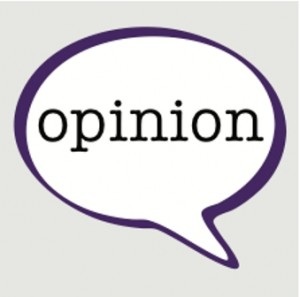What do the companies Always, Verizon, Under Armour, CoverGirl, Pantene and GoldieBlox all have in common? They’ve been using female empowerment as their main advertising campaigns for the past couple years.
Ads are no longer only directed to the “manly man” or focused on sex appeal to drive sales. Now we can expect to see a new persona on the marketing horizon: the empowered female.
According to the website She-conomy, women make 85 percent of all brand purchases. Though the media was slow to market toward women, within the past decade it’s realized “girl powered” advertisements work.
By using these ads, companies can create brand loyalty with their customers because they feel the company promotes a positive message for women. This not only creates a positive impact on their brand’s reputation but also increases sales. According to the website Advertising Age, after Dove launched its “Campaign for Real Beauty” in 2004 – one of the first successful female empowerment commercials – its sales jumped from $2.5 billion to $4 billion.
The ability of a marketing team to get the female consumer attracted to a product and endorse it because of the advertising campaign is a powerful weapon. I have to admit that this type of commercial intrigues me because I want to believe in the idea of strong and competent women in society.
But that’s just it. I want to support female empowerment, and these ads make me think that I will be doing so by buying their products. As a consumer, I want to know if companies are only selling me the idea of female empowerment in order to get me to buy their products or if they actually support women.
Through researching various companies who have recently used female focused advertisements, it was reassuring to find that some companies have partnered with charitable organizations that emphasize powerful women. For example, Pantene is working with the American Association of University Women and has given grant money to student-led teams to fight gender stereotypes and biases on college campuses. Verizon has paired up with Makers and developed a platform to support more women and young girls getting involved with science, technology, engineering and mathematics fields.
These businesses give me some assurance that what they are supporting in their advertisements is not merely for monetary gain but also for the advancement of women.
While it’s encouraging to see companies getting involved with empowering real women, I worry some businesses are using female empowerment simply as a marketing campaign.
But do we really need these advertisements to make women feel confident and strong? Is there not enough positive enforcement of female empowerment in society that women and girls can feel these things on their own?
My hope is that women and girls have the ability to feel empowered on their own and have strong female role models to look up to, instead of relying on the media for an outlook or advertisements that are trying to sell you a product rather than confidence.
But for the time being, most of these advertisements have positive messages, and in partnering with organizations, they can create some good for empowered women.
Claire Noack can be reached at noac8702@stthomas.edu.



